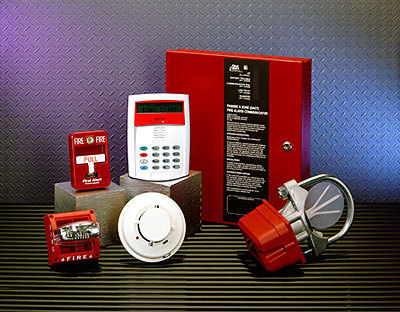Are You Protected -Building Complete Fire Safety Approach
Building Complete Fire Safety-An Overview
Building fire safety comprises a "package" which incorporates construction methods, mechanical and electrical devices, management practice and organised human response tailored to reduce the impact of fire upon the occupants, the building, its contents, the attending firefighters and any neighbouring property. In the context of building fire safety, fire impact is considered to be any threat to life and property caused by heat or smoke and may include adverse environmental impact from toxic products stored on the premises.
Building fire safety cannot be defined as a "single system", it relies upon a group of "sub systems" to form a complete "package". More often than not, if one of the "sub systems" is removed, the whole "package" will collapse and the occupants within the building will face an unacceptable risk in the event of outbreak of fire. For simplicity, the "package" can be broken down into nine principle "sub systems", comprising:
· Occupant training and education
· Means of escape from the building
· Compartmentation and structural fire resistance
· Firefighting systems
· Fire detection, alarm and communication systems
Occupant training and education
An essential part of any building fire safety system (probably the most important part) is training and education of the occupants in matters of fire safety. Every conceivable device that technology can devise can be placed in a building but if the occupants are ignorant of what a fire alarm sounds like, what are safe and unsafe work practices or where the exits are, then the devices will not achieve a fire safe building. All too often occupant training, fire drills and safe work practices. A management plan, addressing all of these facets together with what to do after a fire has been extinguished to minimize its consequential effect, is very necessary if the overall fire safety system is to be effective.
Means of Escape from the Building

This is an essential part of the fire safety system. A safe, illuminated, well identified way out of the building is required in order that the building occupants can escape a fire (or other) emergency. Often more than one escape route is required so that occupants have an alternative exit if one cannot be reached because of smoke or fire. These exits must be kept clear at all times. Storage of materials in exits is a common hazard and security problems are often overcome by illegally locking fire escape doors which places the lives of the building occupants at risk if a fire occurs.






Comments
Post a Comment